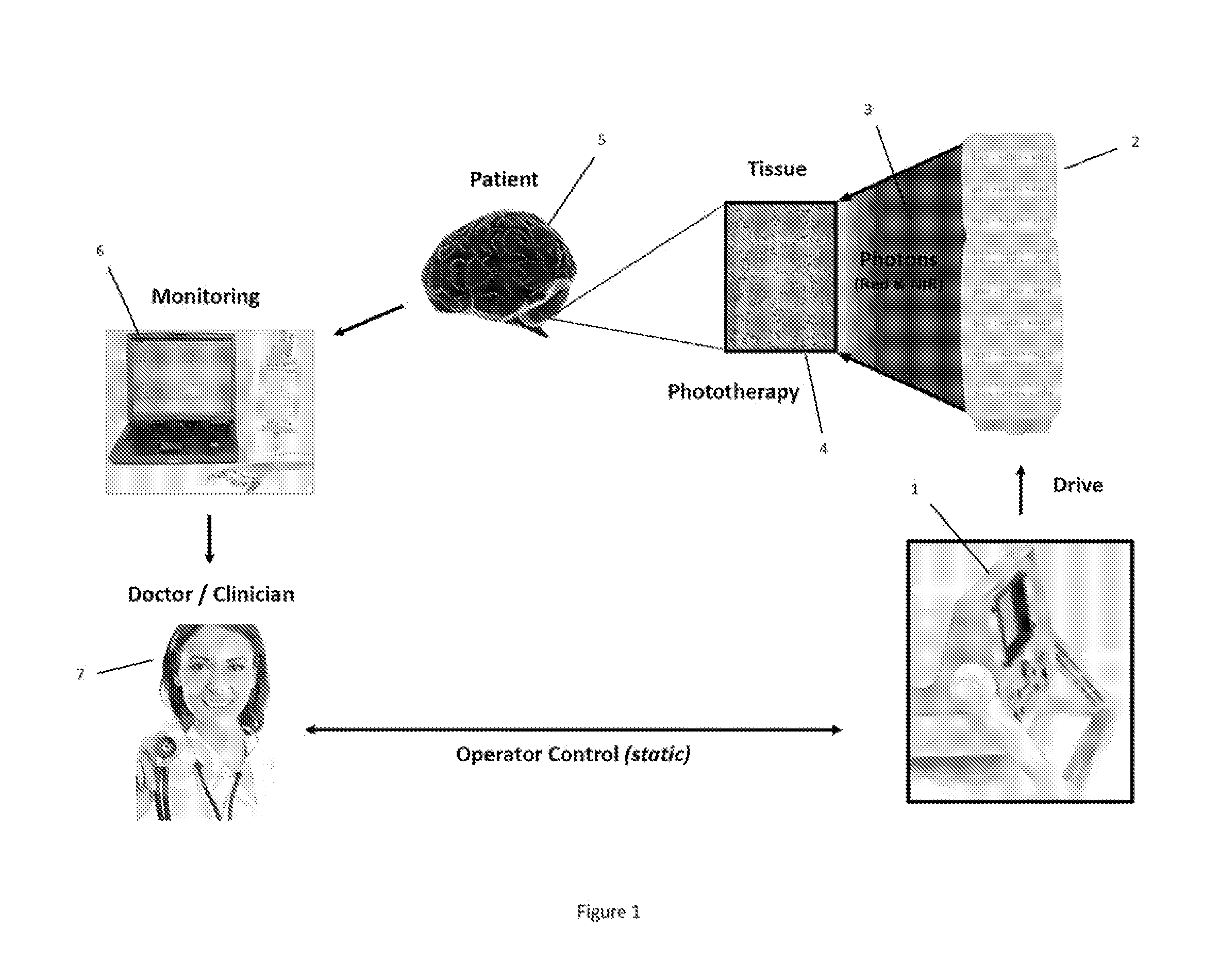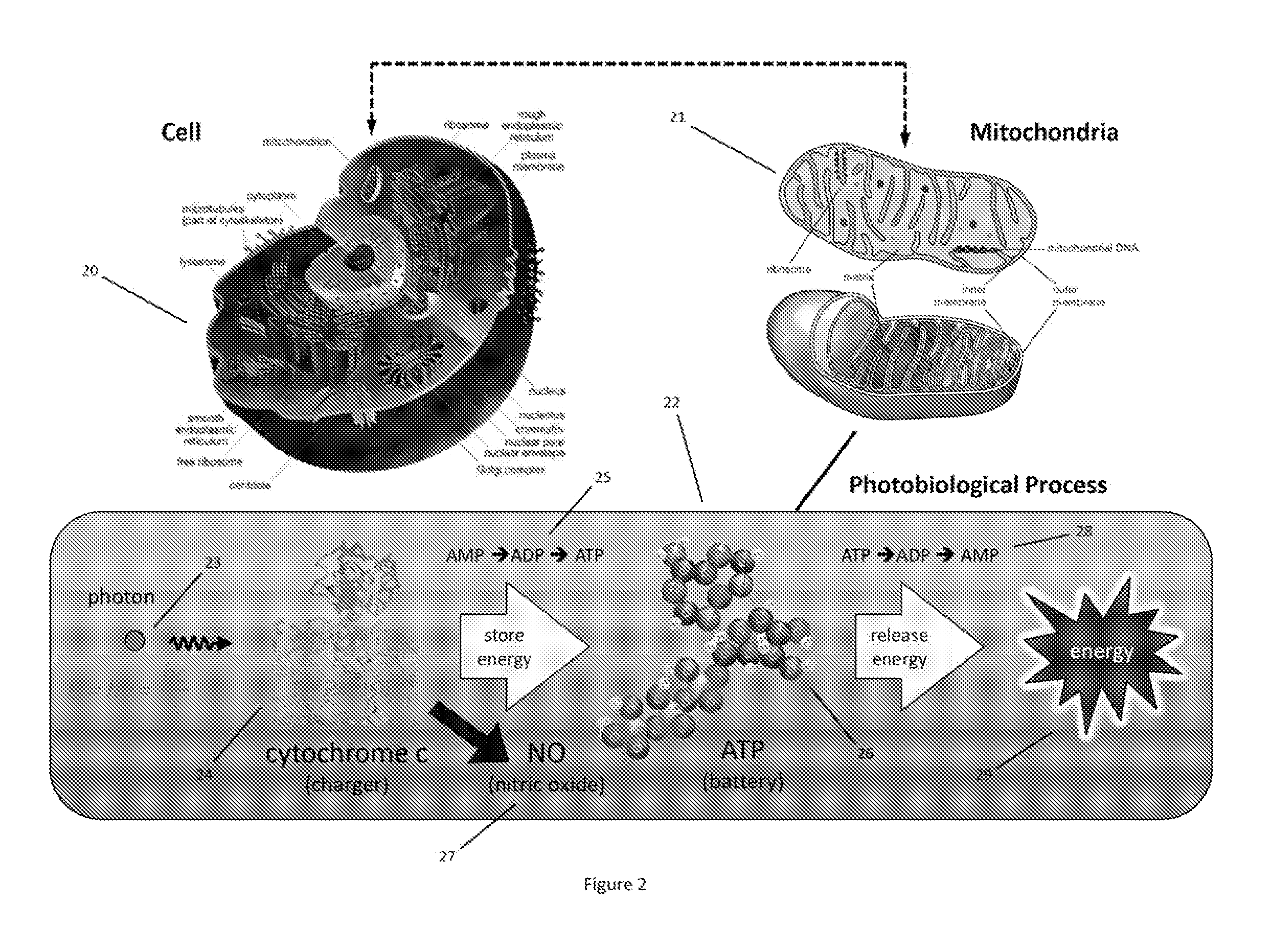Unfortunately, despite all the interest and activity, rather than producing a systematic comprehensive knowledge of the cellular interactions with constant and oscillatory directed energy, the consequence of these sensationalized and poorly controlled experiments has produced a confusing, and even self-contradictory, mix of science, pseudo-science, mysticism, and religion.
In these published works, however, no agreement or
consensus was reached defining the optimum pulse conditions for therapeutic
efficacy.
While early attempts used filtered lamps, lamps are extremely hot and uncomfortable for patients, potentially can burn patient and doctors, and are extremely difficult in maintaining uniform illumination during a treatment of extended durations.
Lamps also suffer short lifetimes, and if constructed using rarified gasses, can also be expensive to replace regularly.
Unfiltered lamps, like the sun, actually deliver too broad of a spectrum and limit the
efficacy of the photons by simultaneously stimulating both beneficial and unwanted chemical reactions, some involving harmful rays, especially in the
ultraviolet portion of the
electromagnetic spectrum.
Like lamps, lasers risk burning a patient, not through heat, by exposing tissue to intense concentrated
optical power.
A second, more practical problem arises from a
laser's small “spot size”, the illuminated area.
Because a
laser illuminates a small focused area, it is difficult to treat large organs, muscles, or tissue and it is much easier for an overpower condition to arise.
Another problem with
laser light results from its “coherence,” the property of light preventing it from spreading out, making it more difficult to cover large areas during treatment.
Moreover, the optical spectrum of a laser is too narrow to fully excite all the beneficial chemical and molecular transitions needed for to achieve high
efficacy phototherapy.
The limited spectrum of a laser, typically a range of ±3 nm around the laser's center
wavelength value, makes it difficult to properly excite all the beneficial chemical reactions needed in phototherapy.
It is difficult to cover a range of frequencies with a
narrow bandwidth optical source.
So just as
sunlight is an excessively
broad spectrum, photobiologically exciting many competing chemical reactions with many EMR wavelengths, some even harmful,
laser light is too narrow and does not stimulate enough chemical reactions to reach full efficacy in phototherapeutic treatment.
This range is simply too wide for lasers to cover in a practical manner.
Despite its technical superiority, the prior art phototherapy
system suffers from numerous limitations and draw backs, including poor reliability for its LED pads, the inability to control LED current (and therefore light uniformity) across the LED pads, limited control in the excitation patterns driving the LEDs, limited safety and diagnostic features, and the inability to communicate or receive updates via
the internet, wirelessly, or by cloud services.
In practice however, biological systems such as living cells can not respond to single sub-second pulses of light, so instead one pattern comprising a single
wavelength and a single
pattern frequency of pulses is repeated for long durations before switching to another LED
wavelength and
excitation pattern frequency.
Prior-art phototherapy apparatus remain limited by a number of fundamental issues in their design and implementation includinguse of lasers (instead of LEDs) limited by their intrinsically
narrow bandwidth of emitted light unable to simultaneously stimulate the required range of chemical reactions necessary to maximize photobiostimulation and optimize medical efficacy,safety concerns in the use of lasersLEDs mounted in a rigid housing unable to conform to treatment areaspoor, improper, or ineffective modulation of phototherapy excitation patterns
 Login to View More
Login to View More  Login to View More
Login to View More 


